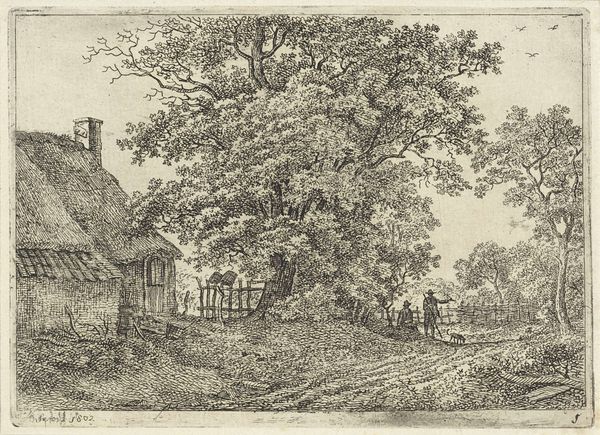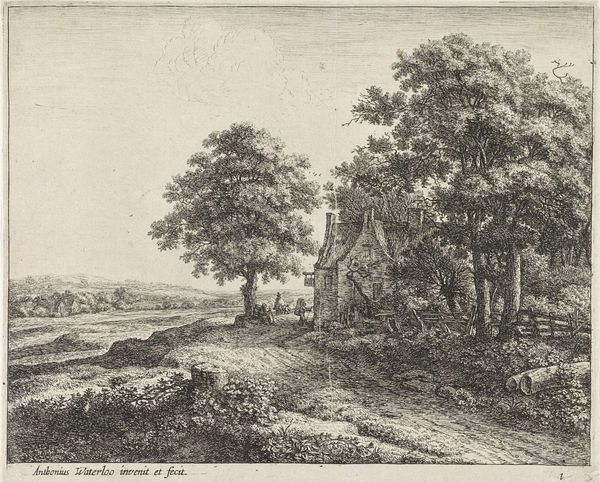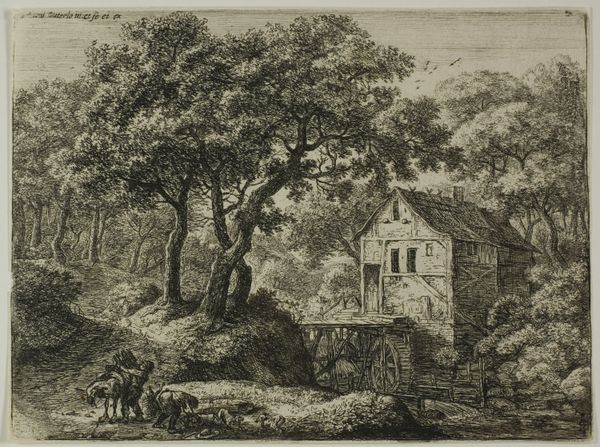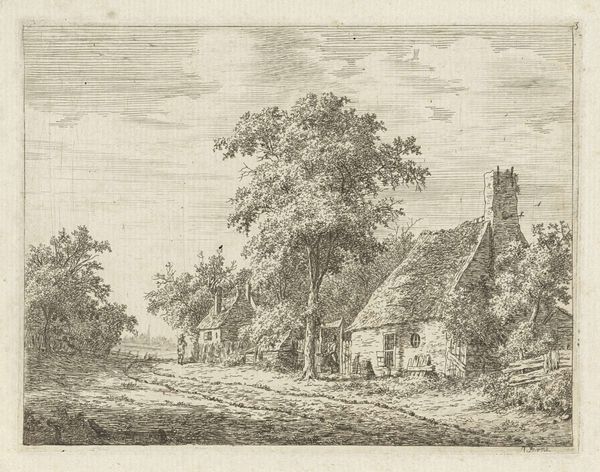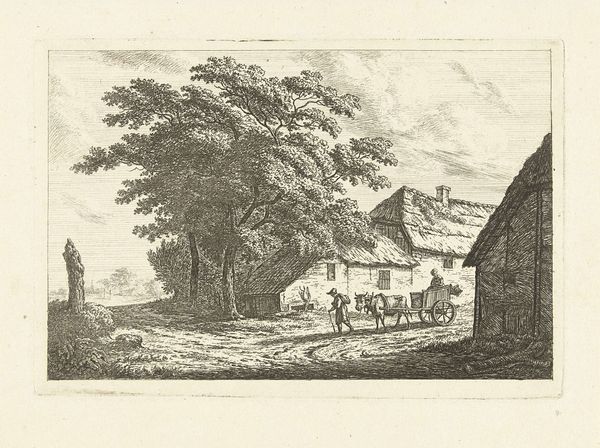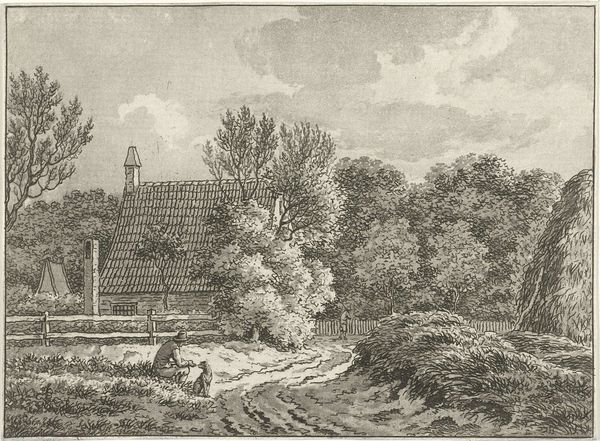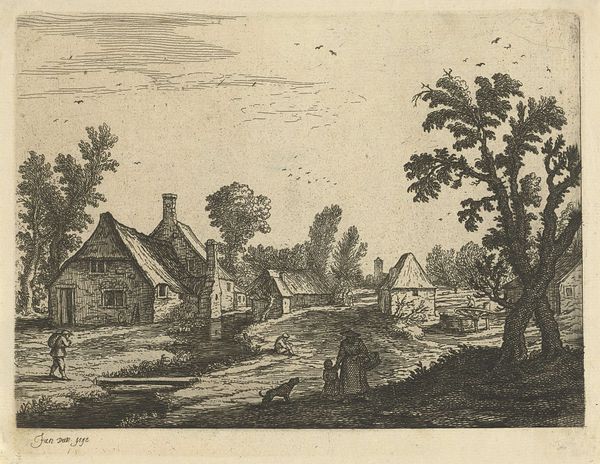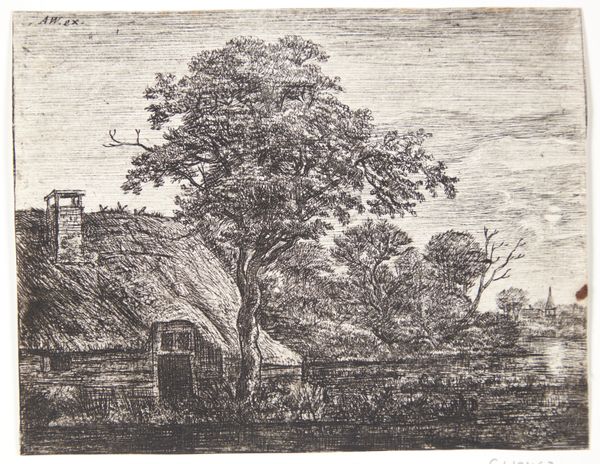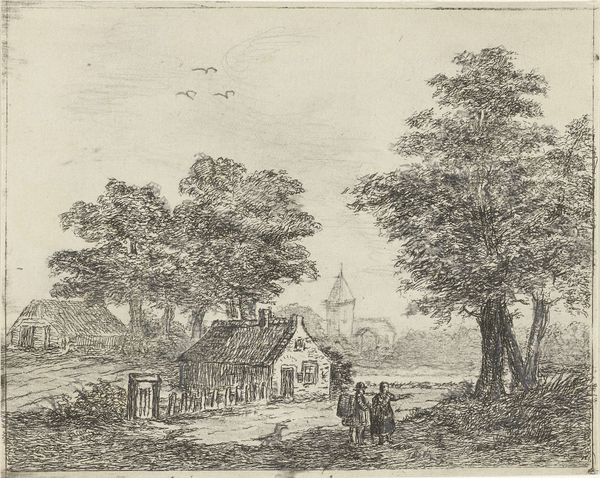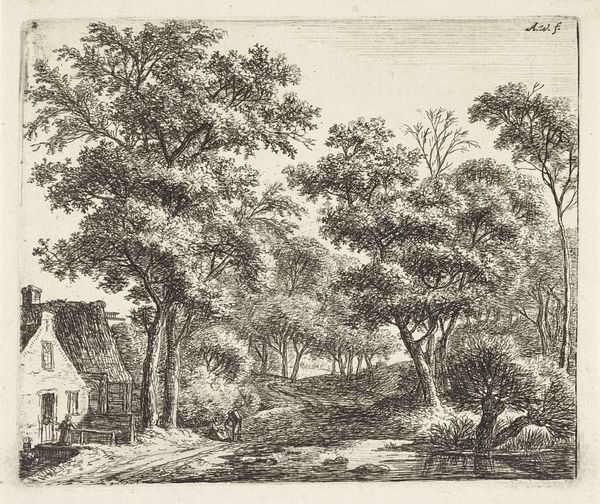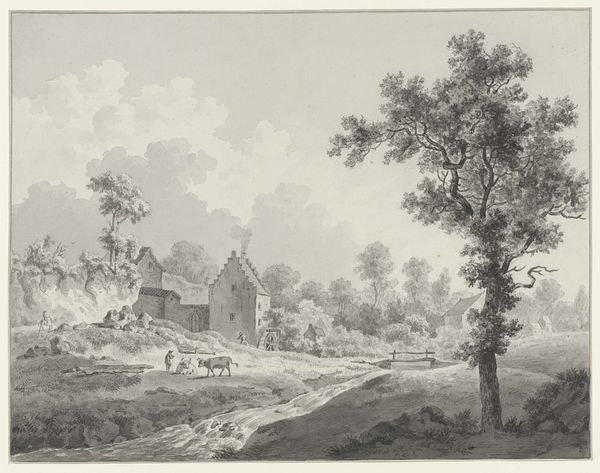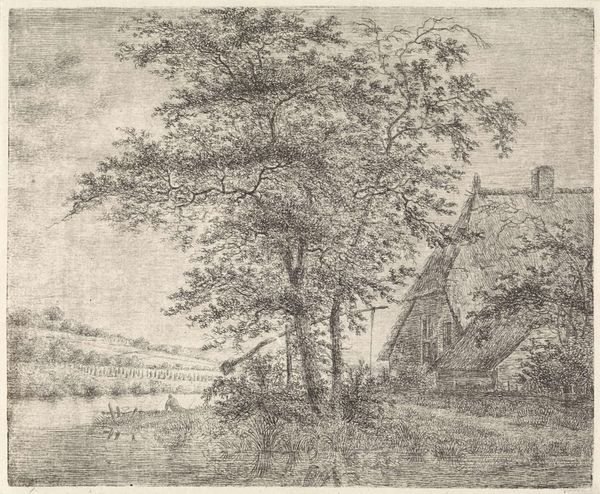
drawing, print, etching, ink
#
drawing
#
baroque
#
dutch-golden-age
# print
#
pen sketch
#
etching
#
old engraving style
#
landscape
#
ink
#
genre-painting
Dimensions: height 103 mm, width 144 mm
Copyright: Rijks Museum: Open Domain
Curator: I'm drawn to the immediate serenity of this scene, almost a quiet resignation; everything seems to exist under a blanket of hazy stillness. Editor: Indeed. What you're seeing is an etching, ink and pen drawing known as "Grote lindeboom voor een herberg," which translates to "Large Linden Tree in Front of an Inn". The work is unsigned and attributed to an anonymous artist, dating approximately from 1630 to 1740, placing it firmly within the Dutch Golden Age, now held at the Rijksmuseum. The location offers essential context. The tree looms large next to the building on the composition's left. Curator: You know, it almost feels symbolic—this huge, encompassing tree, practically embracing the inn. Do you feel the presence of any hierarchy? Like, is the tavern secondary to the image of nature itself? Perhaps indicative of changing social dynamics of the era? Editor: Maybe it is! To the people of the time, the landscape was very much related to issues of land use and ownership, agricultural work, or recreation, which had its clear relation to both leisure and labor. I focus more on the physical act of creating this landscape, how the artist employed the etching technique, where each line involved intense, repetitive work, resulting in a tonal complexity—it speaks of industry, a slower, more deliberate process. Curator: Definitely. And considering it was the Dutch Golden Age, these images and prints would have been reaching bourgeois audiences, perhaps idealizing simpler times. A possible visual echo of the growing gap between the wealthy and everyone else...a subtle reminder, maybe, of rural, labor-intensive existence? Editor: Interesting point, Curator. The materiality really intrigues me, though—the paper it’s printed on, where it came from, who made it, how it got to the artist, the chemicals used for etching—the means of producing the piece is something else that reveals economic realities that should be taken into consideration. It isn't only about the image of labor that we can get from its context, but about its own means of production! Curator: Agreed. And those seemingly simple lines on the surface actually lead us to deep chasms. Editor: Absolutely, it is that tension which brings out an understanding of art in society.
Comments
No comments
Be the first to comment and join the conversation on the ultimate creative platform.
